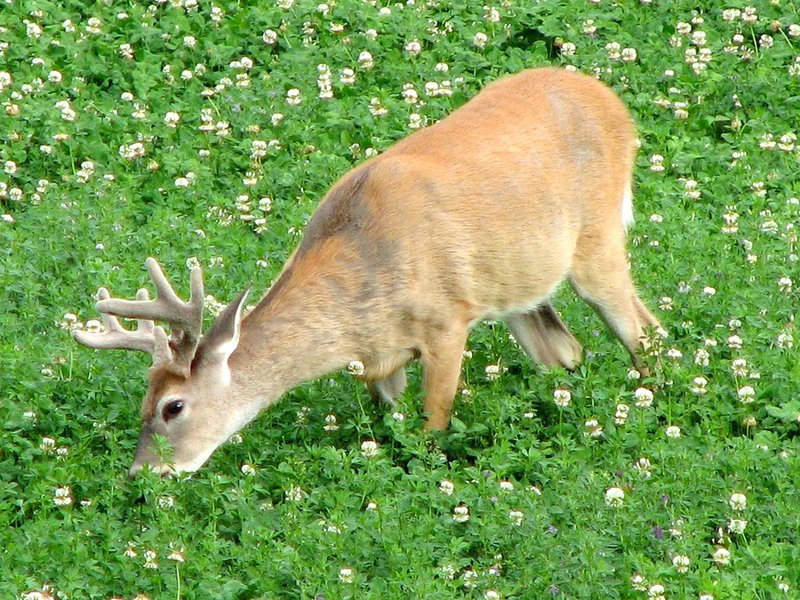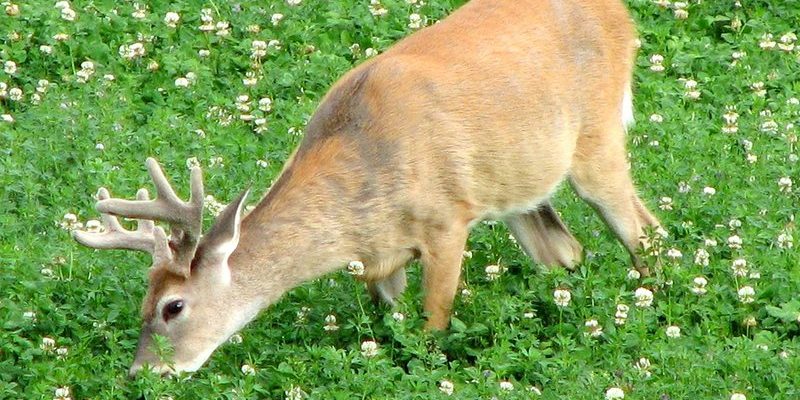
Let’s dive into the fascinating world of deer diets and hunting strategies. Understanding how they eat and evade predators not only satisfies our curiosity about these amazing animals but also sheds light on the delicate balance of nature. With that in mind, let’s explore the specifics of what deer eat and how they navigate their environments for survival.
What Do Deer Eat?
Deer are primarily herbivores, which means their diet mainly consists of plants. You might be wondering what kind of plants they prefer. Well, deer enjoy a variety of foliage, including leaves, grasses, fruits, and even nuts. Their specific menu can change based on the season and their location.
In spring and summer, deer tend to munch on tender green shoots and leaves. Think of it as a buffet of fresh salads! As the seasons shift to fall and winter, they switch to more fibrous plants and twigs since their usual salad options are scarce. Oak and acorn trees are particularly prominent in their diet during the colder months, providing essential nutrients.
Interestingly, deer have a unique digestive system. They possess a four-chambered stomach, allowing them to break down tough plant materials efficiently. This adaptation helps them extract more nutrients from their food. So, when you see a deer grazing, remember that it’s not just snacking—it’s a complex process that supports their energy needs.
Seasonal Diet Changes
Let’s take a closer look at how deer adapt their diets with the changing seasons. Each season presents a different set of challenges and food sources.
– Spring: As the snow melts and new growth appears, deer feast on the lush greenery. They love tender leaves, shoots, and wildflowers. It’s a time of abundance, and you might see them in open fields enjoying a good meal.
– Summer: During the warmer months, deer consume a lot of fruits and berries, which are abundant at this time. Things like apples, pears, and various berries become part of their diet, giving them the sugars needed for energy during their active months.
– Fall: As fall approaches, deer start preparing for winter. They switch back to a diet that includes acorns and other nuts, which are rich in fats and help build up their reserves for the colder months. This is also the time they bulk up before the harsh winters.
– Winter: In winter, when food is scarce, deer rely on woody plants and evergreens. They can strip bark off trees and nibble on twigs to survive. It’s a tough time for them, but their adaptability helps them make it through.
How Deer Hunt for Food
Alright, let’s talk about hunting! You might think that deer just eat whatever they find, but there’s a bit more strategy involved. They have keen senses that help them locate food and stay safe from predators.
Firstly, sight plays a significant role. Deer can see well in low light, which is when they often venture out to graze. They are crepuscular, meaning they are most active during dawn and dusk. This timing helps them avoid many predators while still finding food.
Secondly, hearing is crucial. Deer have large ears that can pick up even the faintest sounds. This sensitivity allows them to be alert to any approaching danger. It’s like having built-in security systems for when they’re out and about!
Finally, smell is perhaps their strongest sense. With about 300 million olfactory receptors, deer can detect scents from far away. This ability helps them sniff out food sources and potential threats, allowing them to make decisions about when and where to feed.
Grazing Habits
Deer have specific grazing habits that help them maximize their food intake while minimizing risk. One common behavior is selective feeding, where they choose the most nutritious parts of plants first. Imagine being at an all-you-can-eat buffet; you’d probably go for the best dishes first, right?
They often feed in open areas where they can see surrounding vegetation and spot potential predators. However, they also gravitate toward areas with thick cover for safety. This delicate balance helps them dine on their favorite foods while staying vigilant.
Another interesting aspect is their social structure. Deer often feed in groups, which can provide safety in numbers. When one deer senses danger, it can warn the others. This teamwork ensures that they can eat while keeping each other safe, almost like good friends watching each other’s backs.
Predators and Survival Strategies
Of course, deer have their fair share of predators. Coyotes, wolves, and even humans hunt deer, so survival requires clever tactics. One way they stay safe is by using their excellent senses to detect danger early.
Deer also employ a behavior called “stotting,” where they leap high into the air when they sense a threat. This action not only makes it harder for predators to catch them but also signals to other deer that there’s danger nearby.
Additionally, camouflage is a key survival strategy. Their brownish coats blend nicely with forest surroundings, making it more challenging for predators to spot them. They often stay still for long periods, further minimizing their chances of being seen.
When pushed, deer are fast and agile. They can reach speeds of up to 30 miles per hour! This burst of speed can get them to safety in a heartbeat, especially when they zigzag to throw off pursuers.
Impact of Deer Diet on Ecosystems
Deer play an essential role in their ecosystems, primarily through their eating habits. Their browsing affects plant populations, helping to maintain the health of forests and meadows.
When deer graze on certain plants, it prevents any one species from dominating the landscape. This diversity is crucial for a balanced ecosystem. Plants depend on deer to control their growth, making room for various other species to thrive.
However, too many deer can create problems. Overbrowsing can lead to reduced plant diversity, which might affect other animals in the area that rely on those plants for food. It’s a fine balance, and nature often finds ways to keep things in check.
So there you have it—an engaging dive into the diet and hunting strategies of deer. From their seasonal eating habits to clever survival tactics, these animals are much more than just a pretty sight in the woods. Understanding their behaviors and the integral role they play in their ecosystems can deepen our appreciation for wildlife.
Next time you spot a deer, take a moment to consider all the strategies behind its existence. It’s not just quietly grazing; it’s a master of survival, navigating a delicate dance with nature. It’s a reminder of how interconnected our world is, and how every creature, big or small, plays a part in the grand scheme of things.

